Comprehensive Guide to Piano Basics for Beginners
Piano Basics for Beginners: A Comprehensive Guide
Piano education is both crucial and challenging. The quality and professionalism of your initial learning will greatly influence how far and fast you progress in the future. Developing a solid foundation in posture, rhythm, piano note reading, and Piano Hand Shape will set the stage for long-term success.
Posture
For beginners, instructors start by helping you develop good posture, as it enhances body control and improves overall accuracy. Here’s how to do it:
1. Place the piano bench properly, ideally aligned with the center of the piano.
2. Place your feet flat on the ground. The right foot can be slightly ahead of the left foot.Occupy the anterior one-third section of the bench—this position affords superior stability and facilitates the provision of solid support by one's feet.Adjust according to your personal comfort.
3. Let your arms hang naturally at your sides, with your elbows raised slightly above the keyboard for a relaxed playing position.
4. Maintain an upright sitting position with a slight forward tilt from the hips, promoting optimal balance and freedom of arm movement at the piano.
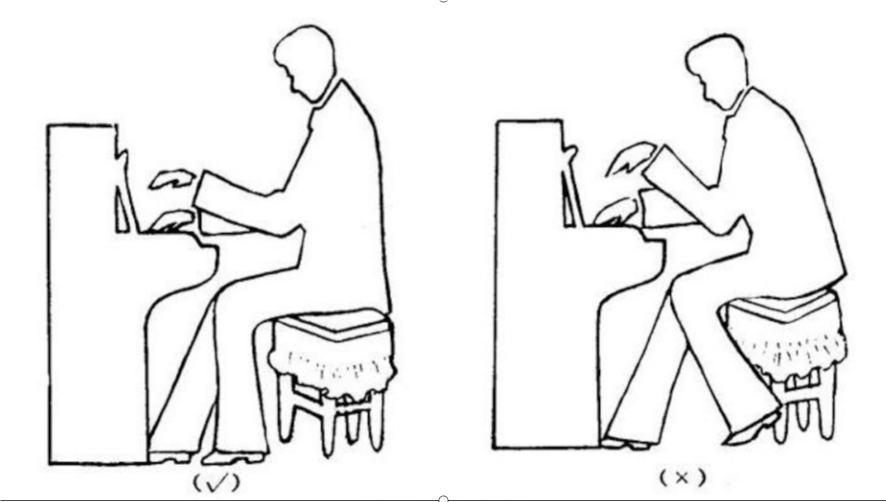
Good posture is crucial for building a sustainable Piano Hand Shape and avoiding tension or fatigue during long practice sessions.
Finger Numbers
Finger numbers are simply a way to label your fingers. They appear above the piano notes in the sheet music, indicating which finger to use for each note. This method is relatively easy for beginners to grasp.
The finger numbers are shown in the diagram below:
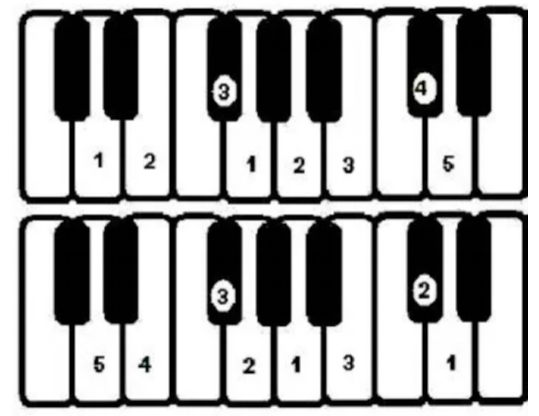
For finger exercises, there are specific pieces like Hanon and etudes that require the use of certain fingers to strengthen them. These pieces also help you practice maintaining a proper Piano Hand Shape while transitioning between piano notes smoothly.
Besides finger exercises, the fingerings in a piece of music usually follow the principle of proximity and comfort. That means using the most convenient fingers to play the piano notes based on their movement on the staff, and playing in a way that feels most comfortable for you.
In the early stages of learning, the fingerings in the pieces are usually detailed to help you develop good habits. In more advanced pieces, detailed fingerings are less common.
Although beginners might find reading music challenging and playing with the correct fingerings even harder, it’s a matter of habit. Once you develop good finger habits and a solid Piano Hand Shape, you won’t need to constantly check the sheet music for the correct fingers.
Solfège / Piano Note Names
1. Solfège
Solfège refers to the names we sing when vocalizing musical notes. In numbered musical notation, these are represented as 1, 2, 3, 4, 5, 6, 7.
The piano keyboard consists of 88 black and white keys.

Each group of seven white keys (plus five black keys) repeats. The further right you go on the keyboard, the higher the pitch; the further left you go, the lower the pitch. You can find a group of two black keys, and the piano note before them is Do (1).
2. Note Names
The seven notes (1 2 3 4 5 6 7) also have alphabetic names, known as piano note names: C D E F G A B. The C in the middle of the keyboard is called Middle C.
Let’s review:
Numbered Notation: 1 2 3 4 5 6 7
Solfège: Do Re Mi Fa Sol La Ti
Piano Note Names: C D E F G A B
Understanding these names and their positions on the keyboard is essential to reading and playing piano music effectively.
Piano Hand Shape
Imagine holding a ball lightly in your hand. Your hand forms an arch, with the knuckles slightly raised. Use the pads of your fingers (near the fingertips) to touch the keys.
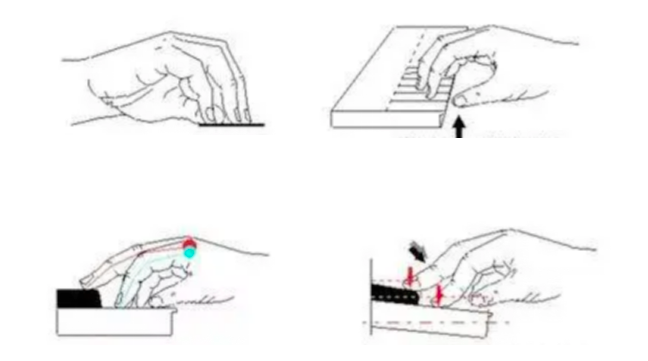
The first and second joints of your fingers provide support. Maintain this support while playing, avoiding collapsed or bent fingers. A stable Piano Hand Shape improves agility and control during performance.
For young children, focus more on recognizing musical notes and developing a sense of music rather than strictly enforcing Piano Hand Shape to avoid diminishing their interest. Adults generally have stronger acceptance and can master proper hand shape early in their training.
Reading Music
Reading music involves understanding the staff, which consists of five lines and four spaces. The lines and spaces are numbered from bottom to top: the first line, first space; second line, second space; third line, third space; fourth line, fourth space; fifth line.
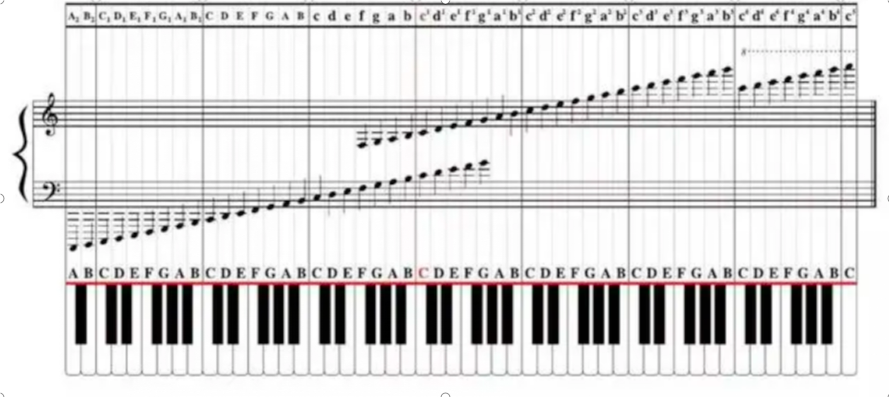
The staff can extend upward or downward with additional lines. Regardless of the number of lines added, the principle remains the same: the further right on the keyboard, the higher the piano note; the further left, the lower the piano note.
Using a Piano Metronome
1. Understanding the Parts
1. Scale – The numbers on it indicate the tempo.
2. Lever – The numbers on it indicate the beats per measure.
3. Spring
2. How to Use It
First, wind the spring using the small key. Wind it a few times, but don’t over-tighten it. The piano metronome can still be used without winding, but winding it allows for a bell sound on the first beat of each measure.
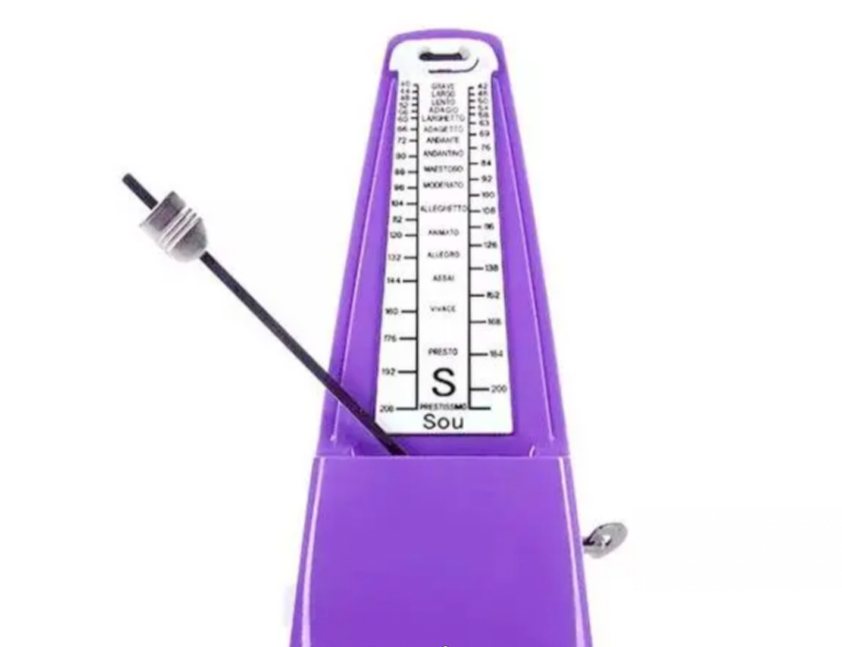
Then, pull out the lever. It has numbers 0, 2, 3, 4, 6, indicating the number of beats per measure. Some sheet music includes tempo markings, allowing you to adjust the pendulum on the scale to match the tempo.
Practicing with a piano metronome helps develop your internal sense of timing and rhythm. It's especially useful when practicing finger exercises or fast passages that require consistent tempo. As you grow more advanced, using a piano metronome can train your precision and steadiness even in complex pieces.
Conclusion
Both piano enthusiasts and beginners should master these basic concepts. With good posture, proper Piano Hand Shape, an understanding of piano note names, and practice with a piano metronome, you can build a solid foundation and progress quickly. Consistency in your approach will not only improve your technique but also make learning more enjoyable and fulfilling.












